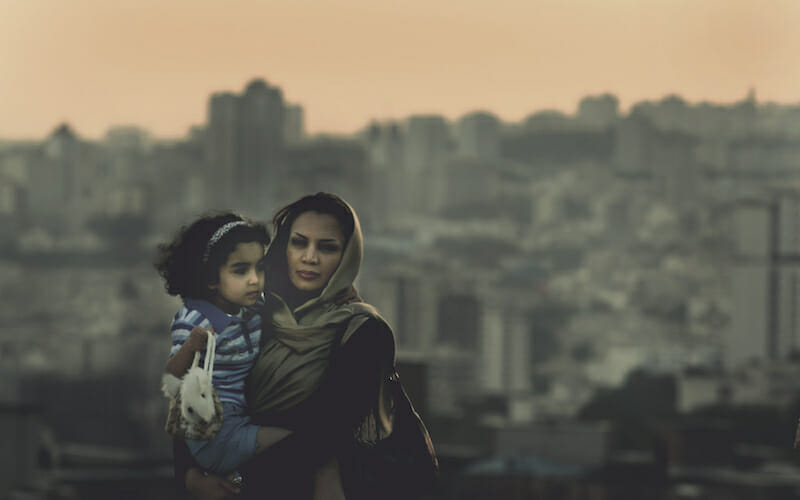
The Hijab Speaks of Another Time in Iran. Do Away with It.
Iran is an Islamic Republic. It’s a unique mode of governance: a blend of democratic frameworks such as elections in which people choose MPs and the President, and undemocratic institutions. Unelected officials and power-holders don’t consider themselves accountable to the public, have enormous, unrestricted and unsupervised decision-making power and don’t revise their policies even at the height of public discontent. Some examples are the Guardian Council, Expediency Discernment Council and the Supreme Leader.
When power is unchecked, is not responsible and is not moderated, it strays into tyranny and autocracy, even in a society which carries the epithet of a “republic” boasting of holding elections several times a year to empower the people to make political choices.
The authorities of the Islamic Republic conventionally talk of Iran as a role model for the Islamic nations and the Supreme Leader is considered by his entourage and supporters to be the spiritual leader of the Muslims of the world. However, not all the actions, practices and commandments of the Supreme Leader and the several undemocratic institutions and unelected officials in Iran’s complex power structure apparently represent the ideals of a role model nation which can be inspiring for the rest of the world. Iran’s human rights record and its treatment of women and religious minorities present the picture of a nation that is struggling to preserve the basic entitlements of its citizens while lecturing the rest of the world about human rights and criticizing human rights violations elsewhere.
Iranian women: the hijab dilemma
Women make up half of the Iranian population, but religious dogmatism, myopia and arbitrary decision making by different administrations have denied them some of their essential rights which depicts Iran as a misogynist society to international observers.
One of the difficulties imposed on Iranian women with which they have been grappling since the Islamic Revolution in 1979 that toppled the kingdom of Shah Mohammad Reza Pahlavi, is the idea of a compulsory hijab, or Islamic dress code. A study by the Iranian Center for Strategic Studies affiliated with the office of the president conducted three years ago and released recently indicates that 49% of Iranians are against the idea of the compulsory veil.
Compulsory hijab was not one of the promises of the frontrunners and figureheads of the revolution, but as time went by it became a social norm, and subsequently mandatory and those who question, criticize or oppose it are vilified and quashed. Those women who fail to follow this governmental prescription face difficulties in employment, education and the public sphere.
Hijab rules in Iran are such that even female foreign dignitaries, officials, athletes, academicians and tourists visiting Iran are expected to follow them, wearing headscarves and long dresses. They are sometimes criticized for sympathizing with women who object to this practice. They are following a relatively unpopular requirement even if they are just visiting for a couple of days. In 2017, the feminist Swedish Trade Minister Ann Linde was criticized for wearing a headscarf when traveling to Iran.
Earlier this year, protests broke out across Iran, mostly in the capital, Tehran, which resulted from a mixture of economic grievances against the government and the unhappiness of women about the compulsory hijab laws of the country. Police in Iran’s capital arrested 29 women who were accused of being “deceived” into joining the protests.
The hijab protesters in Tehran came to be known as the Girls of Revolution Street and have chosen Wednesday as the day they demonstrate. They express their displeasure by wearing white scarves or even taking off their headscarves and walking around the city. By doing so on #WhiteWednesdays, they stand out and are sometimes filmed walking around, shopping and traveling on taxis and buses. This simple action speaks for the dissatisfaction of a large number of women who want to be free to make their private choices. Involvement by the religious authorities and police in the enforcement of hijab is incomprehensible to international observers..
A clear example of how the compulsory hijab rules make the foreign observers perplexed is the reaction by the participants of international sports events to the dress code stipulated for their participation. Just recently, Soumya Swaminathan, a 29-year-old Indian chess champion pulled out of Asian Chess Championships starting in July in the Iranian city of Hamedan, because she was asked to wear a headscarf. She viewed this to be a violation of her basic human rights.
In 2016, there was a similar controversy surrounding the world chess championships hosted by Iran, during which a number of distinguished female players wanted to boycott in protest against the hijab law. Although the Iranian female chess-masters had argued that the boycott would simply undermine the position of the talented Iranian players and that boycotters should have looked beyond the hijab law in order to boost women sports in the country, many international participants were frustrated by the regulations, including the American champion Nazí Paikidze.
Iran’s hijab rules are not as strict and inflexible as they were 15 or 20 years ago. The government is aware that it’s impossible to continuously put pressure on women and girls. Police don’t caution nor arrest women considered to be dressing immodestly and not in line with the government standards.
However, there is a vital question that the Iranian authorities and religious figures need to answer. Is it morally defensible not to allow all women to make choices about issues that they feel uncomfortable about? While women in Iran are fighting for many other rights including equal pay, education, freedom of speech and job opportunities, isn’t it time to find a solution to the hijab dilemma?

